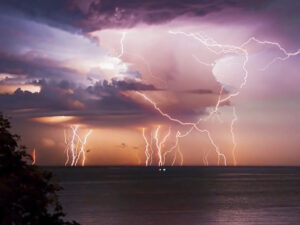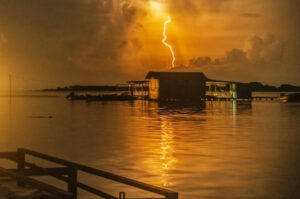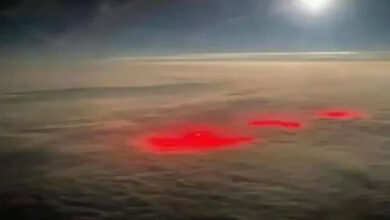Where Lightning Lives: Venezuela’s Lake Maracaibo Holds the World Record for Storms

Lake Maracaibo in Venezuela is home to the world’s most frequent lightning storms, known as Catatumbo lightning, flashing across the sky nearly every night with unmatched intensity and beauty.
hey say lightning never strikes the same place twice, but that rule is clearly broken over the skies of Venezuela’s Lake Maracaibo, the stage for one of the planet’s most dazzling and persistent natural light shows: Catatumbo lightning.
Covering an area of 13,210 square kilometers (5,100 square miles), Lake Maracaibo was once the largest lake in South America and is considered one of the oldest on Earth. Yet, it’s not just its size or age that sets it apart—it’s the unrelenting lightning storms that have placed it in the Guinness World Records and earned it the title of the “Lightning Capital of the World.”

Each year, especially from October onward during the rainy season, the region is struck by an astonishing average of 233 lightning bolts per square kilometer. During peak storm activity, the area can experience up to 28 flashes per minute, totaling more than a million strikes annually. This phenomenon was identified through satellite data from NASA’s Lightning Imaging Sensor, confirming Lake Maracaibo as Earth’s most electrified region.The spectacle, known as Catatumbo lightning—named after the Catatumbo River that feeds into the lake—translates to “House of Thunder” in the local Barí indigenous language.

It occurs around the marshy delta where the river meets the lake and can be seen 140 to 160 nights a year, with electrical activity lasting 9 to 10 hours per night and lightning streaking across the sky 16 to 40 times per minute.
This persistent electrical storm is believed to be caused by a convergence of unique geographic and meteorological conditions. Warm, moist air from the Caribbean Sea and nearby plains flows over the lake and rises due to the surrounding Andes Mountains, Perijá Range, and Cordillera de Mérida, which trap the air and encourage atmospheric instability. As these air masses collide and cool rapidly, they generate intense thunderstorms filled with constant lightning, most of which remains within the clouds.
Beyond its mesmerizing beauty, Catatumbo lightning also produces significant amounts of ozone in the lower atmosphere. However, due to its short-lived and unstable nature, this ozone is not believed to contribute meaningfully to the Earth’s protective ozone layer.
Still, the phenomenon remains a mystery in many ways. Scientists continue to study the exact mechanisms that create such regular and intense lightning, but what’s clear is that Lake Maracaibo is one of the most unique places on Earth—a natural theatre of thunder and light that defies expectations.





